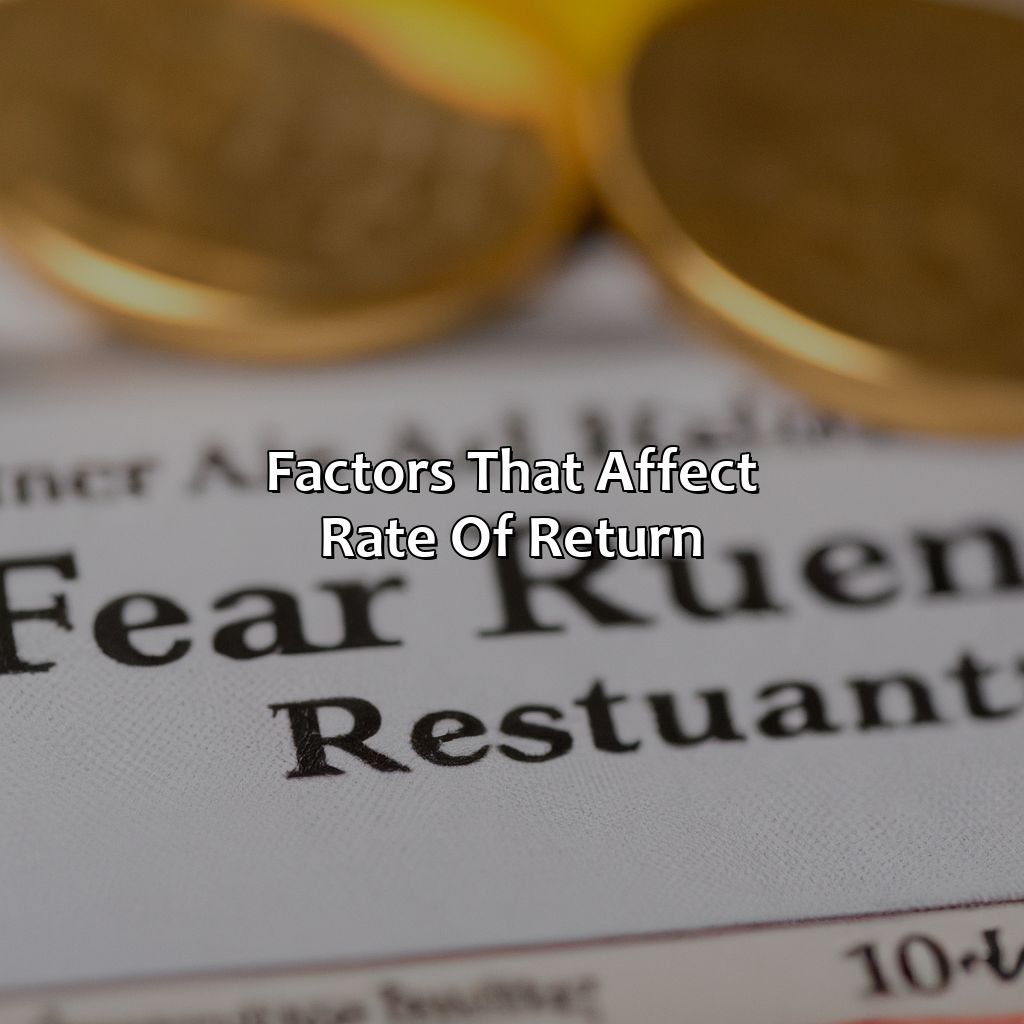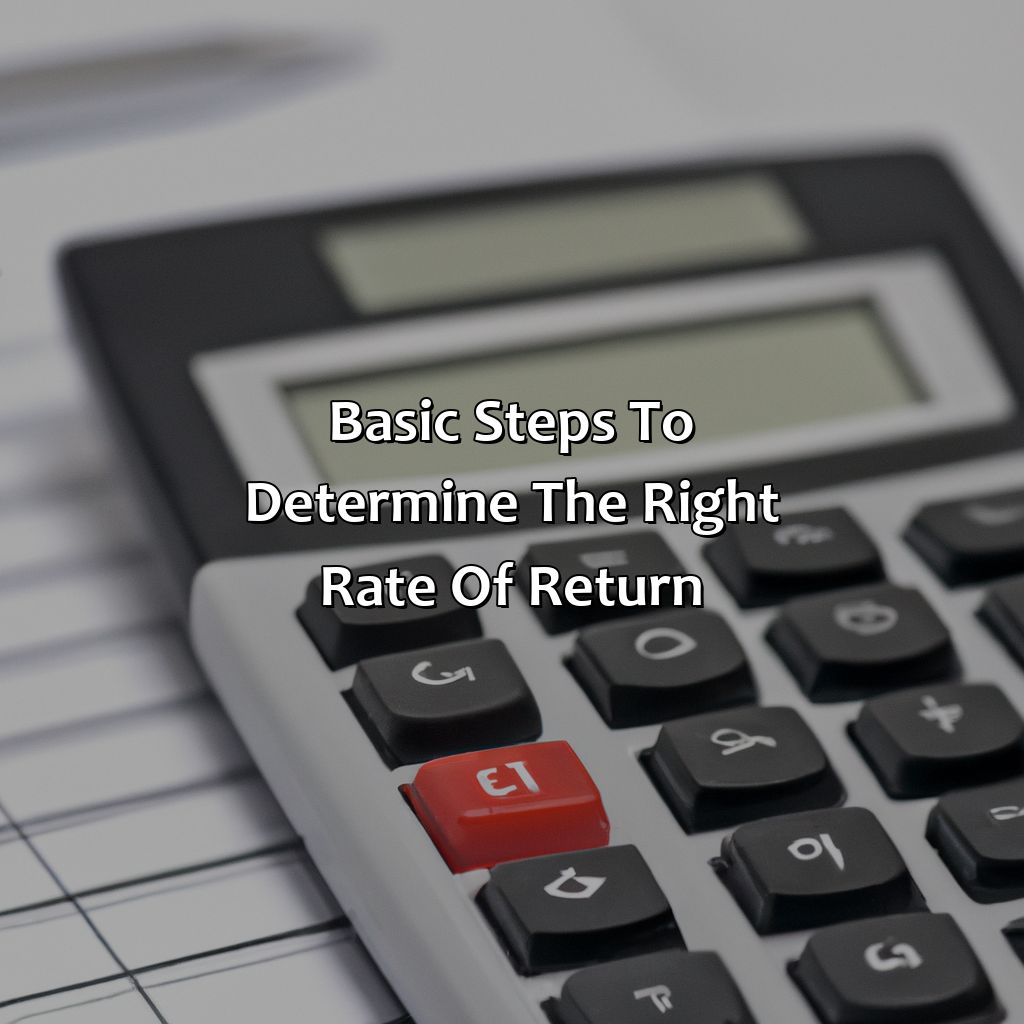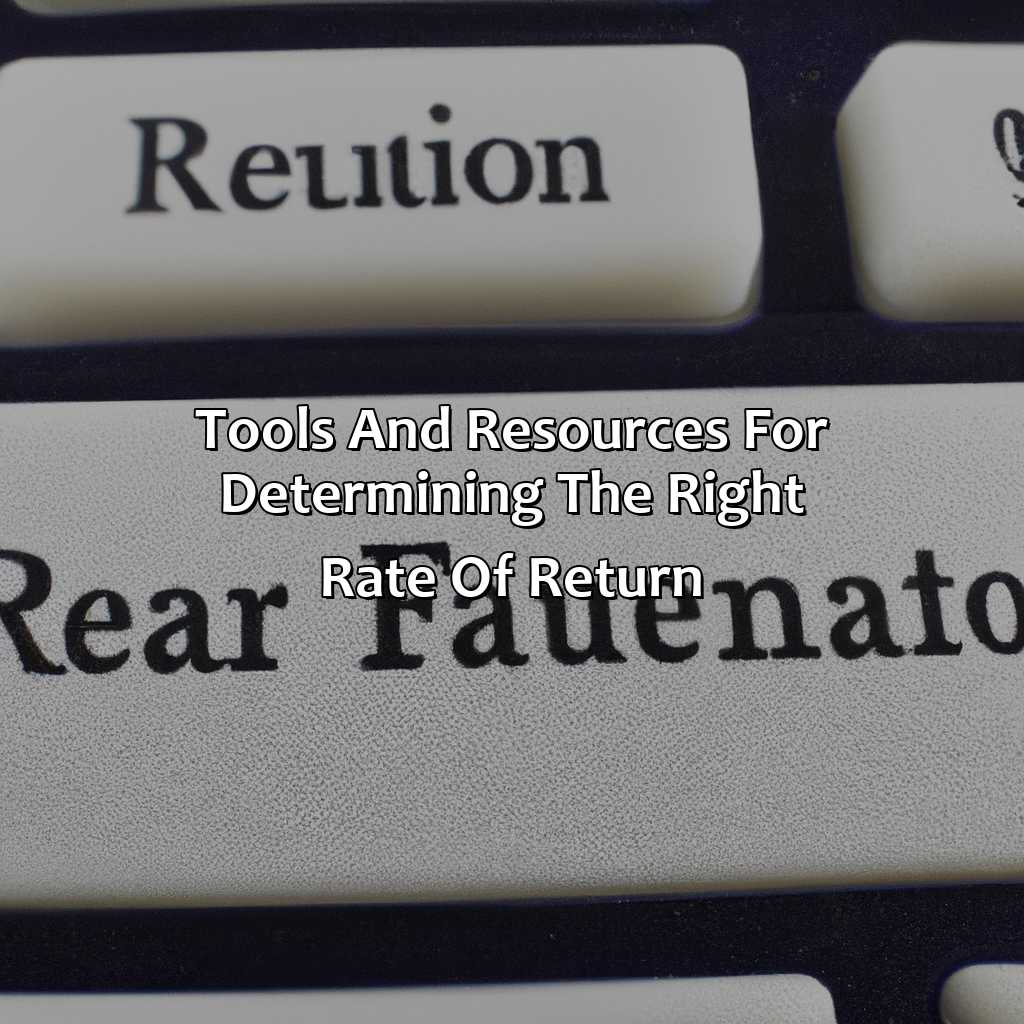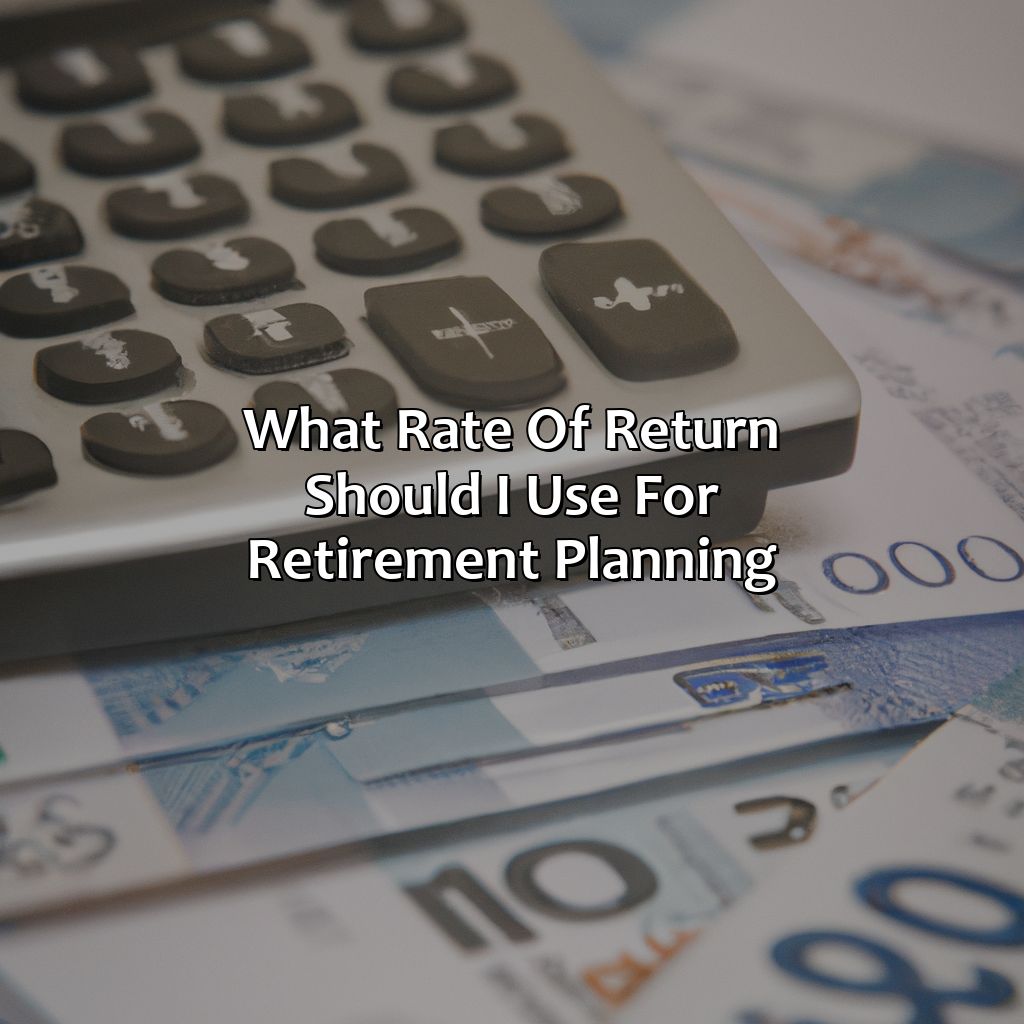What Rate Of Return Should I Use For Retirement Planning?
Key Takeaway:
- Choosing the right rate of return is crucial for successful retirement planning. The rate of return determines the growth potential of your retirement savings and impacts your ability to achieve your retirement goals.
- The rate of return is affected by various factors such as market conditions, type of investment, investment time horizon, and risk tolerance. It is important to consider all these factors before deciding on a rate of return.
- To determine the right rate of return, you need to clearly define your retirement goals and expenses, evaluate different investment options based on risk and return, and choose a rate of return that aligns with your retirement goals.
Are you looking to plan for retirement? To set realistic goals, it is essential to know what rate of return you should expect. This article will help guide you through figuring out the best rate of return for your retirement plan. You are just one step away from financial independence.
Importance of selecting the right rate of return for retirement planning
As we plan for retirement, it is crucial to select the correct rate of return to achieve our financial goals. The accuracy of this selection is vital for our long-term financial well-being and peace of mind.
Selecting the optimal rate of return for retirement planning is the key to achieving financial independence. While there are various options available out there, choosing the right one that aligns with our goals and risk appetite is crucial.
With various investment options today, many details require consideration while selecting the right rate of return for retirement planning. It is important to note that we must understand the trade-offs between high and low-risk investments to optimize our returns.
Many investors, in the past, have fallen into the trap of blindly following investments that have yielded higher returns in the short-term while being unstable in the long run. Therefore, taking a careful and informed approach to select the rate of return is necessary to ensure the longevity of our investment and our retirement.

Image credits: retiregenz.com by Harry Arnold
Factors that affect rate of return
Investment returns are affected by various factors that can impact savings for retirement. Risks associated with financial markets, global geopolitical and economic developments, inflation rates, asset allocation, expenses, time horizon, and market volatility are some of the factors that affect the rate of return for retirement planning.
The following table presents some key factors that can influence investment returns for retirement planning.
| Factors | Description |
|---|---|
| Market risks | Fluctuations in market prices and interest rates |
| Inflation rates | The cost of living rises over time |
| Asset allocation | A strategy that balances investments |
| Expenses | Financial charges associated with investments |
| Time horizon | The period over which investments are held |
| Market volatility | The frequency and magnitude of market price changes |
It’s essential to recognize that market risk, inflation, and expenses, are essential factors in retirement savings planning. Moreover, it is essential to balance asset allocation based on retirement goals, time frame, and risk tolerance levels.
Pro Tip: It’s crucial to keep track of investments and regularly review the plan to adjust it according to changes in risk tolerance levels, income, and goals.

Image credits: retiregenz.com by James Duncun
Basic steps to determine the right rate of return
To determine the appropriate rate of return for retirement planning, certain steps can be taken. These steps include:
- Analyzing financial goals
- Assessing risk tolerance
- Identifying investment options
- Monitoring the portfolio
- Adjusting the plan as necessary
- Seeking professional advice
It is important to consider diversification and avoid making emotional or impulsive decisions. Taking these steps can help ensure a successful retirement plan.
In addition to these steps, it is crucial to consider that the rate of return should be realistic and attainable given individual circumstances. Blindly following trends or projections can lead to disappointment and failure.
To ensure a stable financial future, it is important to take these steps and seek professional guidance. By doing so, individuals can avoid the fear of missing out on a secure retirement.
Image credits: retiregenz.com by Adam Jones
Tools and resources for determining the right rate of return
Tools and Resources for Determining the Appropriate Rate of Return
Finding the right rate of return for retirement planning can be challenging. Here are some tools and resources to help you determine the most appropriate rate for your retirement savings:
Table 1: Historical Average Annual Returns for Different Types of Investments
| Investment Type | Average Annual Return (%) |
|---|---|
| Large-cap Stocks | 10.2 |
| Small-cap Stocks | 11.5 |
| Bonds | 5.6 |
| Real Estate | 9.7 |
| High-Yield Savings | 0.5 |
These are historical averages and may vary based on market conditions and the type of investment.
It’s important to also consider your risk tolerance, financial goals, and retirement timeline when deciding on a rate of return. Consulting with a financial advisor can provide personalized advice.
Don’t risk missing out on your retirement goals. Use these tools and resources to determine the rate of return that aligns with your financial goals and start planning for a comfortable retirement.

Image credits: retiregenz.com by Harry Duncun
Some Facts About What Rate of Return to Use for Retirement Planning:
- ✅ The commonly used rate of return for retirement planning is 4%. (Source: CNBC)
- ✅ However, some financial advisors advocate for using a range of returns between 2-6% depending on market conditions and individual risk tolerance. (Source: Kiplinger)
- ✅ It’s important to consider inflation when choosing a rate of return for retirement planning. (Source: The Balance)
- ✅ A higher rate of return may mean taking on more risk, which may not be appropriate for some individuals. (Source: U.S. News & World Report)
- ✅ It’s important to regularly review and adjust the rate of return used for retirement planning based on changing market conditions and personal circumstances. (Source: Investopedia)
FAQs about What Rate Of Return Should I Use For Retirement Planning?
What rate of return should I use for retirement planning?
One of the most important factors in retirement planning is determining what rate of return to use in your calculations. Here are some frequently asked questions and answers to help guide your decision-making process.
1. What is a reasonable rate of return to use for retirement planning?
There is no one-size-fits-all answer to this question, as the rate of return you should use for retirement planning will depend on a variety of factors, including your age, risk tolerance, and overall financial situation. However, many financial experts suggest using a conservative average rate of return of around 4% to 5%.
2. How does my risk tolerance impact the rate of return I should use for retirement planning?
If you have a higher risk tolerance, you may feel comfortable using a higher rate of return in your retirement planning calculations. However, keep in mind that higher returns often come with higher risk and volatility. On the other hand, if you have a lower risk tolerance, you may prefer a more conservative rate of return, even if it means potentially lower returns in the long run.
3. Should I adjust my rate of return as I approach retirement?
As you get closer to retirement, many financial experts suggest gradually reducing your expected rate of return in your retirement planning calculations. This is because you will have less time to recover from market fluctuations or other unexpected events that could impact your savings. A more conservative rate of return can help you better prepare for the potential risks of retirement.
4. How can I estimate my potential rate of return for retirement planning?
One way to estimate your potential rate of return is to look at historical market averages for the types of investments you plan to use in your retirement portfolio. However, keep in mind that past performance is not an indicator of future returns, and there are many factors that can impact market performance. It’s best to work with a financial advisor to help you make informed decisions about your retirement planning.
5. What are some risks associated with using a high rate of return in retirement planning?
Using a higher rate of return in your retirement planning calculations may increase your expected returns, but it also comes with increased risk. If your investments do not perform as well as expected, you may not have enough savings to support your retirement lifestyle. Additionally, a high rate of return may lead to overconfidence in your retirement planning, which could lead to overspending or taking on too much risk.
6. What are some benefits of using a more conservative rate of return in retirement planning?
While a more conservative rate of return may lead to lower expected returns in the long run, it also comes with some benefits. First, a more conservative rate of return can help you better prepare for unexpected events or market downturns that could impact your savings. Additionally, a lower expected return may help you more realistically assess your retirement needs and make adjustments as needed to meet your goals.






